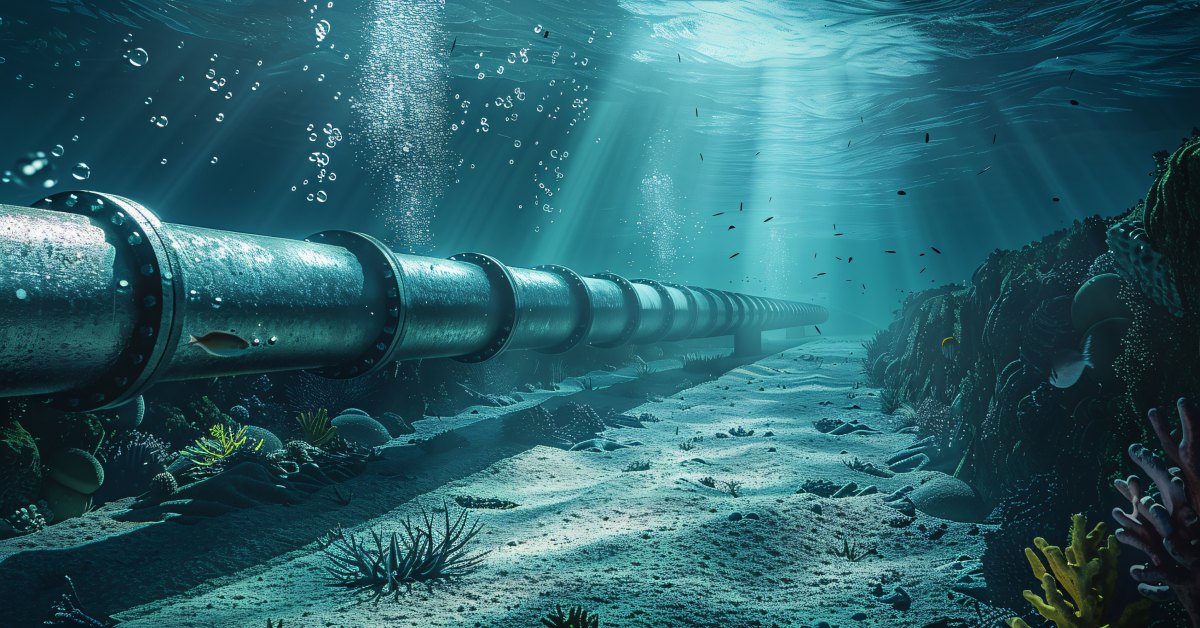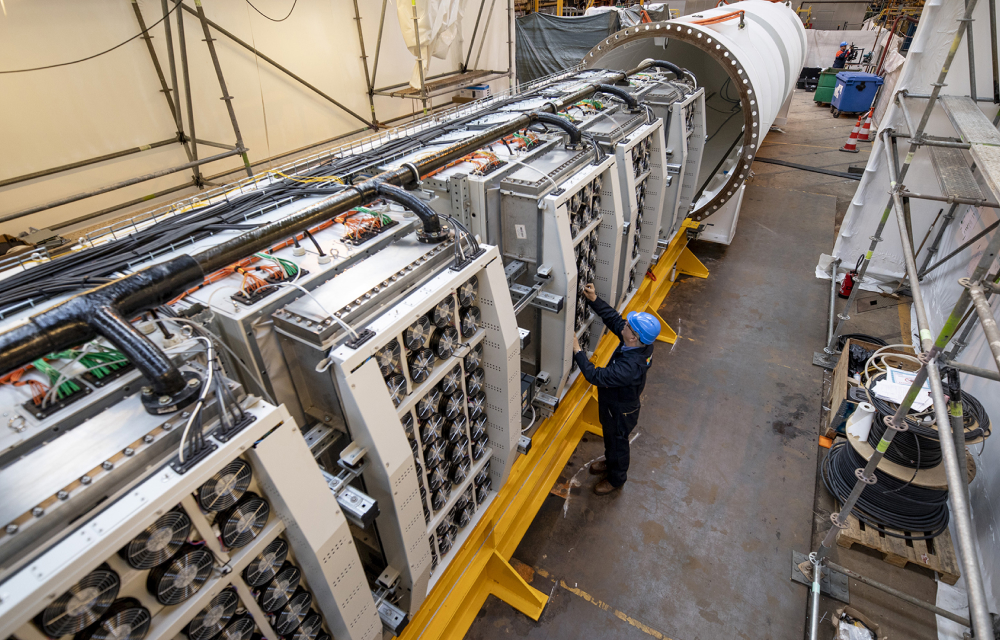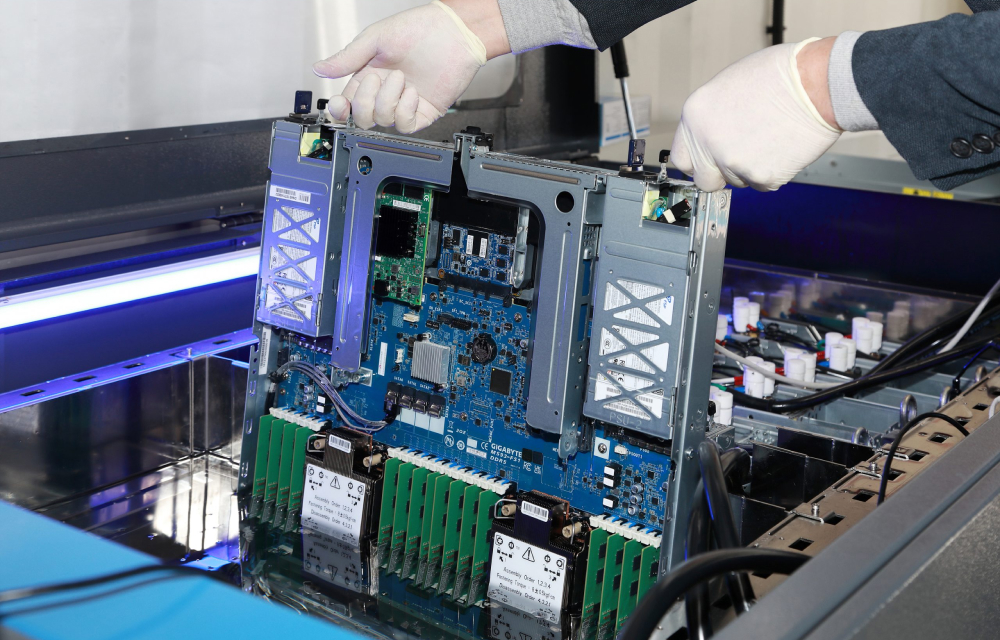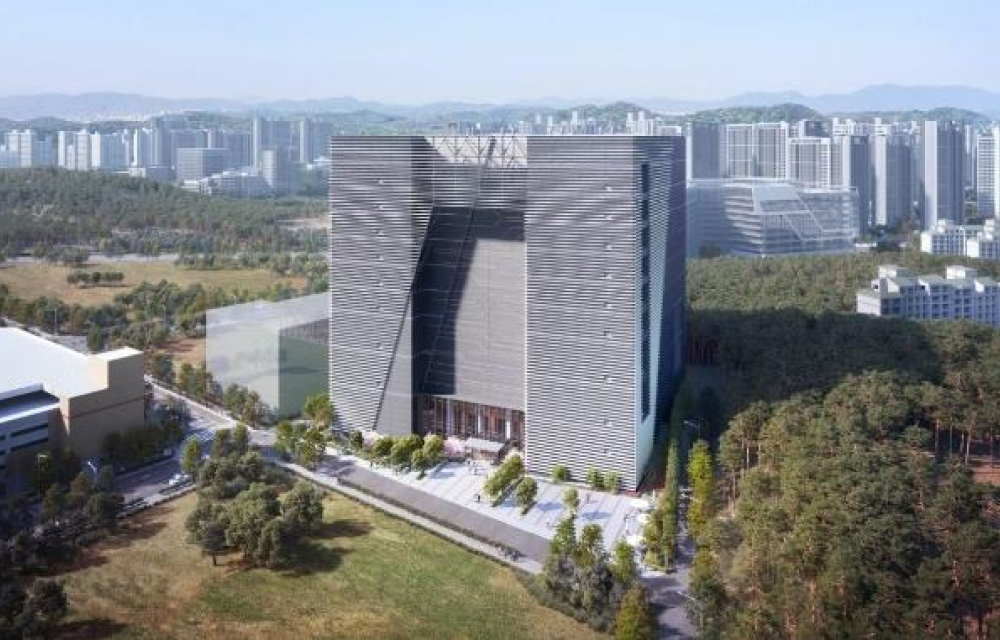Let’s take a look at the idea of submerging data centers underwater and how using seawater to cool them could reduce costs, boost energy efficiency, and shorten construction times. Also, learn more about Samsung C&T’s innovative approach to keeping data centers cool using immersion cooling.

In the era of artificial intelligence (AI), big data, and Internet of Things technology, we are more connected than ever. The infrastructure powering this connectivity is data centers – the physical buildings housing the servers and systems required to keep us online. Every search query entered into a search engine and every image uploaded to our social media requires energy to keep these data centers running.
With all this data being processed requiring vast amounts of energy, it is crucial that data centers don’t overheat. This requires cooling infrastructure that is highly energy intensive. Over the last decade, one hypothesis has posed the idea of placing data centers underwater, using seawater to keep them cool. This article will take a deep dive underwater to understand what data centers are, the challenges of keeping them cool, and the future possibilities for underwater data centers.
What Are Data Centers and Why Are They Important?
Data centers house the servers and storage systems that keep our digital world afloat. They make sure our emails get sent out to the right people, keep companies safe from attacks online, and connect our devices to smart watches, TVs, and cars. The world as we know it would not exist without data centers.
According to the International Energy Agency (IEA), there are currently more than 8,000 data centers globally, with about 33% of these located in the United States, 16% in Europe, and close to 10% in China. Currently, Northern Virginia is home to the largest capacity of data centers in the world and can handle an estimated one third of global online traffic.
The Demand for Data in the AI Era
The increasing demand for information and data driven by artificial intelligence, cryptocurrency, and large language models has significantly increased the electricity required to power data centers. There is a competitive landscape of companies developing Artificial Intelligence (AI) chat bots that can translate sentences, help you with your homework, or make your emails sound more professional. Because of these new tools being used in the era of AI, the IEA predicts that data centers will demand an additional 160 TWh to 590 TWh of electricity in 2026 compared to 2022, equivalent to adding another Germany to the world.
Keeping Data Centers Cool is Highly Energy Intensive
Data centers consume a lot of electricity to power their equipment. This leads to large amounts of heat waste, requiring data centers to be cooled down to prevent overheating, a process that is highly energy intensive.
According to the IEA, data center electricity demand comes mostly from the cooling systems and the servers themselves, with each typically accounting for 40% of the total consumption. The remaining 20% is consumed by the power supply system, storage devices and communication equipment.
Data centers around the world currently use two main cooling methods; air cooling and liquid cooling. Air cooling functions similarly to the air conditioners in our homes and uses substantial amounts of electricity to keep data centers at optimal temperatures. Liquid cooling uses a liquid coolant to absorb heat from equipment in the data center and is significantly less energy-intensive, requiring less water and less electricity to function.
Keeping Data Centers Cool Underwater
There have been many techniques designed to help data centers reduce cooling electricity demand. In 2016, Google used machine learning, a subset of AI, to reduce the amount of energy needed to cool data centers by 40%. Another experiment that was undertaken to find new ways to keep data centers cool is Microsoft’s Project Natick, an underwater data center that was submerged in the ocean off the coast of Scotland in 2018.

Case Study: Microsoft’s Project Natick—An Underwater Data Center
In 2013, Microsoft hypothesized that putting data centers underwater could reduce cooling costs, improve construction efficiency, and open possibilities for using renewable energy power. In 2018, the company submerged a waterproof steel pressure vessel 12.2m in length into the bottom of the North Sea near Scotland in phase two of “Project Natick.”
The experiment’s outcome was promising. The underwater data center had one-eighth of the failure rate of a data center on land and was supplied with electricity from 100% wind and solar generated power. Overall, the data center’s construction efficiency was significantly improved, taking 90 days from factory production to operation compared to the one to two years it takes to construct a new data center. Microsoft’s underwater data center experiment shows great possibilities for the future of data center infrastructure and innovative cooling techniques.

How does a data center stay cool underwater?
Microsoft collaborated with a French submarine company to construct their experimental underwater data center. The company had vast amounts of experience building submarines which, much like underwater data centers, are underwater vessels that typically house computer and data processing systems and require cooling. The company adapted the cooling methods used for cooling submarines to the data center project.
To stay cool underwater, the data center piped seawater from the ocean, through the back of its 12 server compartments, and back out into the ocean. Researchers found that the heat from this process did not affect the surrounding water environment, with the water dissipating into surrounding currents immediately.

Advantages of Underwater Data Centers
Oceans are vast and provide abundant space for infrastructure to be built. We already take advantage of our wonderful oceans to build renewable energy infrastructure, build bridges to connect cities, and transport cargo around the globe. It makes sense that this valuable real estate can be used for housing the data centers keeping us connected on land. Some of the advantages of underwater data centers for optimizing cooling include:
- Less energy-intensive cooling and lower costs
- Efficient construction times and cheaper infrastructure
- Abundance of renewable energy located in coastal areas (tidal, wind, solar etc.)
- Places servers closer to populations, giving people access to faster network connectivity
- Vast amounts of space that do not require additional infrastructure on land, reduces the risk of natural disasters impacting networks
Challenges Remain for Data Centers Submerged at Sea
From experiments like Microsoft’s Project Natick, we have learned over the last decade that there are still challenges that need to be overcome before the world’s data centers are relocated to our oceans. Some of these challenges include:
- Difficulty for humans to access and maintain underwater servers, the development of advanced robot technology would be required
- Vulnerable to physical attacks
- Connectivity issues with power grids that require a lot of cables underwater
- The formation of barnacles and crustaceans could affect how heat is transferred in underwater data centers (also known as Biofouling)
- Susceptible to the effects of marine heat waves
How is Samsung C&T Keeping Data Centers Cool?
In February 2024, Samsung C&T’s Engineering and Construction (E&C) Group announced its next-generation data center cooling method using immersion cooling. This method cools the heat produced by severs by immersing them directly in a non-conductive liquid. It has higher efficiency and lower power consumption compared to conventional cooling methods such as air and water. Compared to existing air-cooling systems, electricity consumption decreased by nearly 80%, with Samsung C&T’s immersion cooling system.

Samsung C&T’s E&C Group has expertise in data center construction projects, including its 40MW data center that was completed in Hanam, a suburb outside of Seoul, in 2024. The group is committed to developing more innovative ways to increase the energy efficiency of data centers for a more sustainable future.








